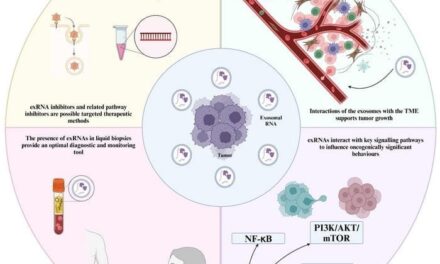Liquid biopsy is proving itself as both an efficacious and cost-effective way to provide a cancer diagnosis to patients. However, to fully realize its potential there will need to be a paradigm shift with a focus on primary care physicians and collaboration across the healthcare enterprise.
By Yuri Fesko, MD
In the fight against cancer, early detection is vital to providing the best treatment and outcomes to patients. Data shows survival rates improve dramatically when cancer is diagnosed early, and the disease can be limited to its point of origin.[1] From Pap tests for cervical cancer to fecal occult blood tests for colorectal cancer, screening and diagnostic laboratory tests have saved countless lives over the years.
Now, a new method of testing shows potential to improve and speed cancer diagnosis: liquid biopsy. These tests, which are sometimes called pan-cancer or multi-cancer tests, help identify the presence of tumors by identifying certain biomarkers circulating in the blood. They have grown to be an important fixture in the field of oncology over the last few years with their promise to detect numerous cancers in early stages through a minimally invasive process.[2]
The broad availability of well-validated and affordable laboratory blood tests that can identify several cancers at once would by a major advancement for cancer screening and patient outcomes. Earlier this year, the Biden administration announced a revitalization of the Cancer Moonshot program, a bipartisan effort to fund cancer research including in prevention and health disparities, addressing inequalities.[3]
Indeed, the announcement alludes to the potential of such blood tests to help make cancer diagnosis sooner. But, as is true in so much of healthcare, the journey to the desired end state will be filled with twists and turns, some harder to navigate than others. To maximize the potential of these technologies, the path must be cleared of potential barriers, an action which can be completed with four critical steps.
#1 Bolster Primary Care
In traditional healthcare, cancer screening and cancer diagnosis is specific to the disease type. For instance, a 45-year-old asymptomatic woman, based on current practice, would likely engage different specialists and technologies to be screened for cancers for her age according to cancer-specific guidelines. This could include a mammography for breast and colonoscopy for colorectal cancer. A multi-cancer screening test could radically reduce this level of complexity, with a single healthcare provider ordering one test and providing results and guidance on next steps to the patient.
But here’s the catch: This would introduce a paradigm shift placing greater burden for care on the shoulders of primary care physicians and other generalists. This is concerning for a few reasons. First, a primary care physician shortage of between 17,800 and 48,000 is projected by 2034.[4] Additionally, primary care physicians may require more resources and education to ensure they are able to order, interpret, and plan for any need follow-up for their patients.
Pan-cancer liquid biopsy will inevitably elevate the role of, and demands on, primary care. Work needs to start now to ensure providers are prepared for this shift. A recent report by the Commonwealth Fund found that the United States lags behind several countries in quality of primary care. It also argues for narrowing the U.S. wage gap between generalist and specialist physicians to strengthen this critical arm of healthcare.[5]
#2 Integrate into Care Pathways
A screening test, by definition, must be followed by a confirmatory test for any positive or inconclusive screening results. Still, liquid biopsy’s positive and negative predictive value has yet to be well characterized in large scale populations. If a patient receives a test result that suggests the presence of multiple cancers, what happens next to create a care plan that ensures they receive adequate diagnostic evaluation and, if indicated, treatment?
The need for integrated care is particularly evident when considering underserved communities lacking access to follow-up care. A scenario where a test result suggests the presence of two or even three cancers would emotionally challenge any patient. But that challenge would differ dramatically for the patient with a care team and health plan versus one bereft of these crucial supports.
The medical community, including laboratory professionals, will need to create solutions to deliver liquid biopsy as part of a multidisciplinary care pathway that connects patients, their primary care team, and specialists, from screening to diagnosis to treatment to monitoring.
#3 Collaborate to Broaden Patient Access
The companies now focused on liquid biopsy innovation are not necessarily the ones that will bring it to market at scale. The resources required to innovate differ from the laboratory and logistics needed to scale testing and relationships and resourcing within the healthcare system are crucial to market access.
For example, at Quest Diagnostics, we strive to make precision medicine more accessible and to provide the broadest access to well-validated diagnostic innovation that we can. That’s why our liquid biopsy strategy combines internal R&D efforts with collaborations. Through our relationship with GRAIL, patients can provide blood specimens for testing with the Galleri multi-cancer liquid biopsy at our 2,100 patient service centers around the United States.[6]
Innovators should not shy away from collaborations. Healthcare is too complex to go it alone, and oftentimes, companies will bring unique contributions to the table that together improve the value proposition for patients, physicians, and health plans. If the goal is to broaden access to testing, utilizing partner networks can enable diagnostic insights for patients and open doors that may have previously been closed.
#4 Establish Sensible Reimbursement
As with any new technology, clear and consistent reimbursement of liquid biopsy tests for cancer diagnosis has yet to be widely established. Evidence suggests that the use of liquid biopsy with conventional treatment can be more expensive and less effective than conventional treatment without liquid biopsy for specific cancers and treatments,[7] but deliver major time and cost savings for others. One company that created a liquid biopsy test for NSCLC stated their average cost for testing is about $1,200 per patient—a great savings when compared to roughly $14,000 for a tissue biopsy, assuming there are no complications.As lung tissue biopsies can be particularly complex, one study found the price per patient can escalate to more than $60,000 if the patient ends up in intensive care.[8]
Indeed, some research suggests liquid biopsy offers both diagnostic and economic benefits. In a majority of studies related to NSCLC, research shows fewer complications for patients who receive a cancer diagnosis through liquid biopsy.[9] Furthermore, faster turnaround times seen with liquid biopsy can enable providers to make quicker treatment decisions for certain patients.
So, should liquid biopsy be widely reimbursed? This question may be particularly relevant to financially underserved patients with limited access to specialty care. As we know, there are a number of requirements to be met before a service can be reimbursed by providers and applying for reimbursement can create new barriers. The research and clinical trials needed to support the benefits of liquid biopsy have yet to be completed sufficiently; while there is some data supporting the cost benefits, there is still more that can be done.
When it comes to making precision medicine more accessible and improving outcomes, it seems clear that reimbursement should be considered. Comparatively, these new technologies have been shown to improve outcomes for many, and cost should not be a barrier to cancer treatment and care.
While a majority of cancer patients and survivors struggle to afford cancer care, the Agency for Healthcare research and Quality (AHRQ) estimates that the total medical costs for cancer in the U.S. topped $80 billion in 2015.[10] With treatment making up so much of this cost, one can’t help but wonder if earlier intervention through multi-cancer liquid biopsy tests would reduce this number significantly. However, these tests can only help if they can reach patients in the first place, so establishing reimbursement remains an important first step to bringing these tests to more patients.
What’s Next for Cancer Diagnosis and Liquid Biopsy?
Like any innovation, pan-cancer testing has not been perfected, and it is anticipated that liquid biopsy and other early detection tools will continue to see advancements in the coming years. Currently, researchers are working to find more precise methods of locating exactly where in the body cancer may be, before it is visible by current techniques such as from a colonoscopy, mammogram, X-ray, or CT-scan.[11] Many experts believe meaningful liquid biopsy advancements can have the opportunity to provide significant insights, including on location, prognostics, and treatment options related to any cancer diagnosis.
The momentum of this movement is promising. While many are excited about the potential of liquid biopsy to improve early cancer diagnosis, advancements are far from the end of the road. Science will need to continue to evolve and bring new innovations—and, ultimately, a standard of clinical care—with it. Liquid biopsy belongs to a vanguard of laboratory innovations, like digital pathology powered by artificial intelligence, with potential to greatly improve quality and outcomes. Over the years, we can expect to see more impressive progressions of science—something that will ultimately benefit many, and aid in treating the one in three people who will be diagnosed with cancer in their lifetime.
ABOUT THE AUTHOR
Yuri Fesko, MD, is a board-certified oncologist and executive medical director of Medical Affairs and Medical Oncology for Quest Diagnostics. Fesko joined Quest in 2016 from Duke University, where he focused on genitourinary oncology and multiple myeloma as a member of the oncology faculty. He completed his fellowship in hematology-oncology and earned a doctor of medicine degree from Case Western University. Fesko also served as chief of Oncology for Duke Medicine of Wake County in 2016. An experienced oncologist and medical business leader, he is currently responsible for strategic clinical development at Quest Diagnostics across multiple functional areas including R&D and Regulatory.
References
[1] EarlyDetectionFactSheet.pdf (canaryfoundation.org)
[2] The future of liquid biopsy (nature.com)
[3] Fact Sheet: President Biden Reignites Cancer Moonshot to End Cancer as We Know It | The White House
[4] The Complexities of Physician Supply and Demand: Projections From 2019 to 2034, AAMC – IHS Markit Ltd, June 2021
[5] Molly FitzGerald, Munira Z. Gunja, and Roosa Tikkanen, Primary Care in High-Income Countries: How the United States Compares (Commonwealth Fund, Mar. 2022). https://doi.org/10.26099/xz8y-3042
[7] Sánchez-Calderón, D., Pedraza, A., Mancera Urrego, C., Mejía-Mejía, A., Montealegre-Páez, A. L., & Perdomo, S. (2020). Analysis of the Cost-Effectiveness of Liquid Biopsy to Determine Treatment Change in Patients with Her2-Positive Advanced Breast Cancer in Colombia. ClinicoEconomics and outcomes research: CEOR, 12, 115–122. https://doi.org/10.2147/CEOR.S220726
[8] Market Intel: Liquid Biopsy – Ready For Prime Time? Medtech Insight (informa.com)
[9] Zheng Y, Vioix H, Liu F, Singh B, Sharma S, Sharda D. Diagnostic and economic value of liquid versus solid tissue biopsy procedures for the detection of targetable mutations in non-small cell lung cancer (NSCLC) tumors: A literature review. Presented at: AMCP 2021; April 12-16, 2021. Abstract C10.
[10] Economic Impact of Cancer
[11] Liquid Biopsy: Past, Present, Future (cancer.org)





